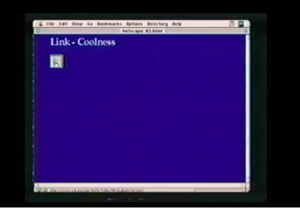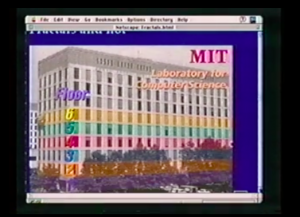Links, Fractals and Information Plumbing
Curious to find a common thread between Xanadu and the Semantic Web, I discovered a treasure trove of videos with Tim Berners Lee, Doug Engelbart, Ted Nelson and others talking about hypertext and all things interconnectivity in the very early days of the Web.
The talks are taped at a MIT symposium, dedicated to the 50th anniversary of Vannevar Bush’s article “As We May Think”. I learned about the symposium from a book I found while digging deeper into the concept of intertwingularity: Intertwingled: The Work and Influence of Ted Nelson (History of Computing) [the link is to the free Kindle edition]
This is the link to TBL’s talk Hypertext and Our Collective Destiny followed by some notes I made when listening. And at Hypertext and Our Collective Destiny you will find the text approximating to the talk.
As We May Link
[Some Notes from TimBL’s talk at Bush Symposium at MIT, 1995]
Television vs. A Sea of Shared Knowledge
“I had (and still have) a dream that the Web could be less of a television channel and more of an interactive sea of shared knowledge” [~ 7 min]
“And interactive way of helping people work together” [~ 9 min]
“The team management problem” [~ 10 min]
Neurons, People, Data Objects
Neurons and documents and people can all have these random associations [~ 14 min]
The moment web objects will start talking to each other we will need to bring some rules [~ 17 min]
The rules (between people, particles and web objects) [~ 18 min]
Associations and Links as $, Readership, Confusion
(a slide 🙂 of this section is available here: https://www.w3.org/Talks/9510_Bush/A1.html)
Some people say: Hypertext is very confusing, we’ll get lost in cyberspace [~19]
But soon, the “click here” seized the public imagination:

“A little bit of semantics” [23.06 min]
Fractals and Information Plumbing
Structure. Tree. Building [~ 30 min]
The problem with modern architecture – it’s not fractal.
If we can find a design for protocols that is fractal, we can scale. Structures working at both higher and lower level. [~ 30 min]
Information plumbing (this person is gonna talk to these and these people, so that a human being feels comfortable when they have interactions at a widely diverse scales)[~ 32 min]
Human interaction maybe has fractal properties [~ 33 min]
No one person knows everything in the system [~ 33.40 min]
Confidentiality – can two agents communicate without other agents being aware of this [~ 34 min]
A machine that is the sum of ourselves and our data [~ 36 min]
Semantics [From the Questions and Answers Part]
Labelling things. Setting up filters. All sorts of metadata. That will make the Web a whole lot nicer place.[~ 42 min]
Browsing with different types of personas (anonymously, or in this and this role) [~ 42 min]
Protocols for reasonable behaviour [~43]
Question about Topology [~43]
Type links [~44 min]
You can make structure. You can make relationships.
Documents being representative of thing, people, other documents.
Stating relationships between objects is where things become really interesting.
#semantics
People abandoned semantics because they felt they cannot solve the AI problem. But in fact to put some semantics on the Web would enable so many things.When you invent link types you can represent the whole thing as a bunch of linked objects.[~45 – 47 min]
P.S. The panel discussion after the event is also worth watching. There notes from it available here: http://cs.brown.edu/memex/Bush_Symposium_Panels.html#Day%202%20Panel


